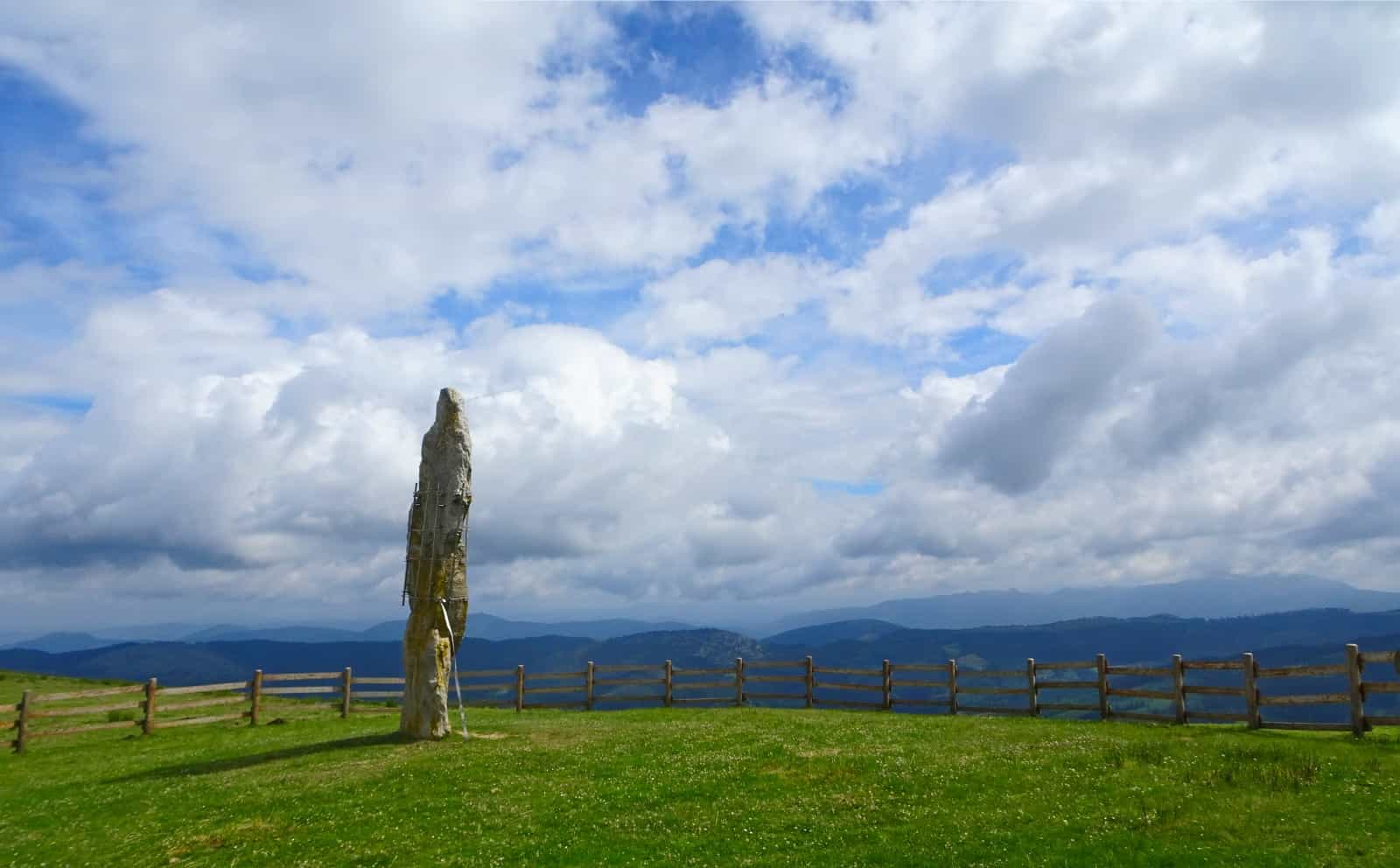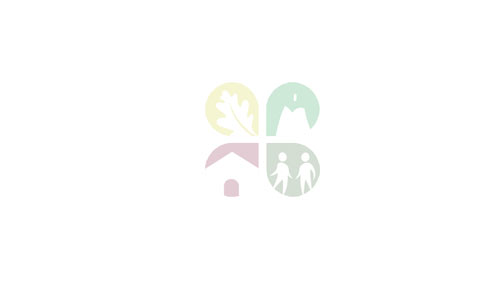The rutting season in Gorbeia
Delight in listening to the bellowing of the deer.
Every year at the end of summer on the Alava side of the Gorbeia Natural Park, the "berrea" (rutting) takes place. The word “rut” designates both the mating period of the deer and the bellowing or scream that the males emit during this time. How the rutting unfolds according to the natural development of the species will depend on the conditions of tranquillity or stillness in the protected area.
The onset of the rutting season in a given region varies very little from one year to another, starting in Gorbeia at the beginning of September. The stag rut lasts from two to five weeks, until the beginning of October in Gorbeia.
Guided tours: Criteria for the allocation of places by drawing lots
The Provincial Council of Alava offers four guided tours to observe the deer rutting, in the Natural Park of Gorbeia. It is a natural spectacle that can be seen from specific observation points, through visits in small groups of fifteen people:
- Registrations can only be made on the Park's website.
- 15 people plus the accompanying guide/s will make up the group visit.
- A maximum of two accompanying persons, in addition to the holder, may be entered on the registration form.
- Each application can select only two days out of the four offered.
- Each registered person (holder or accompanying person) will only be taken into account once for each draw (two days maximum), and all registrations with duplicate entries will be automatically deleted.
- The draw will be made separately for each of the days and each entry will have a registration number. These numbers will be used to make the draw.
Deer behaviour
The deer is a species that lives most of the year in groups, although adults of both sexes do so separately except expect for the rutting period. Groups of females and young males live in their own territories, sometimes not far from those occupied by middle-aged males. Large deer remain more secluded, in particular sectors, often much further away.
At the beginning of September, females gather around, restlessly and nervously and dispatch their offspring. The large stags of all ages, except the young, which are chased away, occupy what are known as ‘rutting sites’ in the stags' territories. The location of these sites facilitates the detection of danger or the approach of an intruder. The rut begins with nightly concerts, stand-offs and the six to nine-year-old stags in combat.
The screaming or bellowing of the males is the most characteristic manifestation of the breeding period. Bellowing is the language by which deer judge and calibrate each other by the voice; the intensity, modulation and frequency of bellowing establishes a hierarchy between stags.
Bellowing reaches its peak when most females are in heat and manifests itself especially at night when contacts between animals are more numerous.
Recommendations
To keep human interference at a minimum during this critical period for the species, remember:
- Go to the Parketxe de Sarria to find out about the deer bellowing in the Gorbeia Natural Park.
- There are recommended stretches of the Park's General Network of Trails for listening to and observing the animals (see map).
- Walking tours in the "bellowing sector" must take place on the General Network of Trails (see map) without being able to leave under any circumstances.
- To avoid disturbing the natural behaviour of the deer, keep your distance from the animals and do not approach them.
- Don't scare the animals or disturb them, stay under cover, keep still and quiet, so you will have more opportunities to observe the deer.
Currently, there are about 600 deer in the Gorbeia natural park, approximately 50% of the population of Alava. In order to protect the species and prevent its geographical dispersal during the rutting season, the Regional Department of the Environment restricts uses and activities on the park's tracks and paths.
Hiking in the Gorbeia natural park
Where the great figures of Basque mountaineering were formed.
Gorbeia Natural Park - the largest in the Basque Country Autonomous Community - is home to an endless number of natural and cultural treasures. A network of trails- some starting on the Alava side and others in Vizcaya- allow walkers to discover the beautiful landscapes of this protected area, observe its flora and fauna and also appreciate the traditions and culture of the human beings who inhabited and still inhabit this territory. The most typical excursion is to ascend to the famous Cruz.
To do this, there are several alternatives: Baias-Gorbeia, Pagomakurre, Murua trails... Other routes lead the traveller along paths where it is possible to observe 'traces' of human history such as dolmens, menhirs, shepherd's huts, charcoal pits, mills and shacks.
Walking quietly and with respect for nature, Gorbeia will thank you by “showing” its most natural face. Thus, it is possible to see or hear the deer, the woodpecker, the grass frog... Walking through its forests and mountain pastures, by rivers and streams and among its rocks, you can clearly understand the reasons why Gorbeia is now a protected natural area. It also helps to understand that it is everyone's duty to conserve it, so that when future generations walk along these same paths, they can continue to enjoy all its natural values.
Here are some ideas to get to know the Park:
From the Bizkaina part:
-
Ascent to La Cruz from Pagomakurre: Typical ascent to Gorbeia from Pagomakurre. Starting on the gravel track that ascends from the car park, you pass the fields of Arraba and then the small beech forest of Egiriñao. The ascent continues to the Aldamiñoste hill before reaching the Gorbeia Cross.
Track: https://es.wikiloc.com/rutas-senderismo/gorbeia-gorbeiako-gurutzera-igoera-pagomakurretik-subida-a-la-cruz-desde-pagomakurre-121235862
-
Atxuri trail: From the Barazar pass, take a concrete track that heads towards the Saldropo wetland (there is a small interpretation point). Once here, climb up to the Egiriñao beech forest. From here you can ascend to the Gorbeia cross. A long and demanding route.
The human footprint in Gorbeia
Local roots.

Cultural heritage is one of the elements to be preserved in a natural park This task, which is included in the regulations for the conservation of biological diversity, according to which our protected areas have been declared, takes on a special meaning in environments such as Gorbeia, a true cultural landscape, where nature and human beings form an inseparable bond.
From the mountain pastures, which have been used since time immemorial, to the pollarded beeches, which have been used for charcoal production, the transfer of uses in Gorbeia has been intense. Little by little, we learn about the occupations, customs and economic activities that enrich the character of one of the places with the longest mountaineering tradition in the Basque Country and the most charming Nature Reserve. We have evidence of honeycomb eagles, chestnut forests, nurseries, lime kilns, fountains, bridges, ancient wolf traps and stone quarries. We know about the cattle routes, the use of wood and the use of water power for forges and mills.
This memory of the people, stories and sounds is kept alive through the many museums you can find in the villages surrounding Gorbeia. Don't forget to devote some time to them during your visit to Gorbeia. You have all the info here: https://www.gorbeiaeuskadi.com/cultura-patrimonio-gorbeia

 The weather
The weather

























